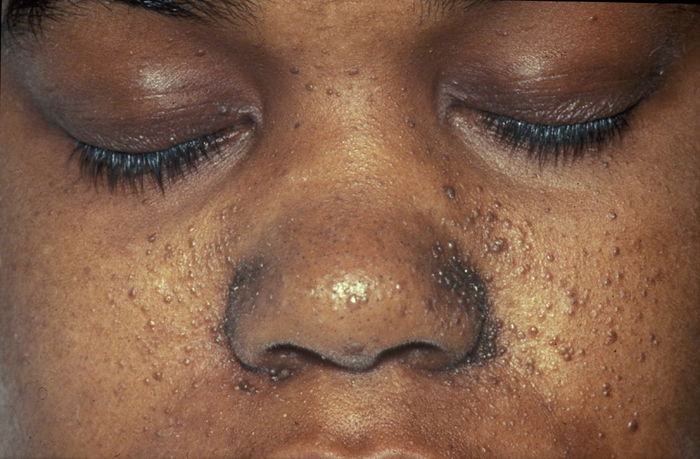
Tuberous sclerosis is an autosomal dominant disease arising from a genetically programmed hyperplasia of ectodermal and mesodermal cells and manifested by a variety of lesions in the skin, CNS (hamartomas), heart, kidney, and other organs. The principal early manifestations are the triad of seizures, mental retardation, and congenital white spots (macules). Facial angiofibromata are pathognomonic but do not appear until the third or fourth year.
Causes of Tuberous Sclerosis
Genetic alterations of ectodermal and mesodermal cells with hyperplasia, with a disturbance in embryonic cellular differentiation.
Symptoms of Tuberous Sclerosis
- Ash leaf spots of skin, and less often, cafe-au-lait spots
- Shagreen spots of the skin, if present, likely on the back
- Red, highly vascular lumps on the face (adenoma sebaceum)
- Mental retardation
- Seizures
- Rough growths under or around fingernails and toenails
- Pitted dental enamel
- Kidney tumors
Diagnosis
The diagnosis may be difficult or impossible in an infant or child if one or two white macules are the only cutaneous finding. More than five is highly suggestive. Even when typical white “ash-leaf” or “thumbprint” macules are present, it is necessary to confirm the diagnosis. Confetti spots are virtually pathognomonic. A pediatric neurologist can then evaluate the patient with a study of the family members and by obtaining various types of imaging as well as electroencephalography. Mental retardation and seizures may be absent.
Treatment
Laser surgery for angiofibromas.
Prevention
Counseling
References